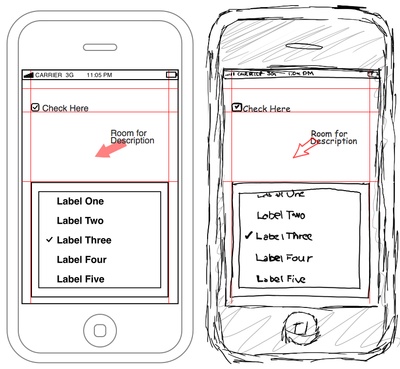I can remember at times being frustrated at the lack of involvement in requirements validation on the part of some of my business stakeholders. It bothered me that we were doing this work for them, and they didn’t seem to want to take the time to give us the feedback we needed.
Then it struck me. One of the things I liked least about my job was doing peer reviews on my teammates’ big, thick, documents of declarative requirements. I didn’t like how long it took me to actually read and then piece the information together to the point where 1] I actually had some notion of the “big picture”, and 2] I could actually give meaningful feedback. And I’m a business analyst!
How about a little empathy?
When forced to “eat some of my own dog food”, I realized that the problem is usually not that the stakeholders didn’t want to engage as much as that we were making communication way too hard for them. Think about it – if we’re asking these business stakeholders to take a few hours of their time to digest and try to understand a long, detailed document, then another couple hours to sit in a meeting to talk about it, only to have to repeat the process 2 or 3 times until we’d beaten them into submission and extracted that signature, then they’re not going to be the most willing participants in the process.
In many cases, some of these business stakeholders were involved in more than 1 IT initiative, so multiply that time and effort by 2 and sometimes 3, and now you can understand why we were having such a difficult time getting stakeholders to willfully engage.
I think the golden rule can be effectively applied here. We BA’s would be well served to not to ask our audience to review something that we would dread reviewing ourselves. Perhaps the easiest way to get customers to engage in the requirements process is to make it easy (or easier) for them to do so.
With that in mind, here are a couple pointers that have served me well in preparing deliverables for stakeholder review:
1. Use visual models to facilitate understanding
Visual models minimize prep time required and present the material in a format that is easy for stakeholders to understand. One thing that has worked well with my team is to distill the functional requirements/user stories/whatever into a few slides of visuals with process flows and mock-ups with callouts showing conceptually how the requirements would be met in the system.
This gives the stakeholders a chance to see the requirements in a context they understand without having to go through the jigsaw-like exercise of piecing together a cohesive view of what we’re trying to accomplish from tens or hundreds of hierarchical requirements.
2. Work from the summary, but keep the details handy
Despite the ease of using the visual summary, some stakeholders will want access to the “fine print”. Sometimes questions will arise that aren’t covered in the summary slides. In this case, I would make sure to have the detailed documentation handy for reference and to add depth to the discussion as necessary. If stakeholders want to review the full documentation, I am always glad to provide it.
We’re not trying to hide the details, just trying to ensure that we focus on the most important items instead of getting hung up on the nuances “shall” vs. “must” and other insignificant semantic or technical issues around verbiage and document organization.
Reviews can be a positive experience, and one that stakeholders look forward to participating in. It requires more work on our part, but as facilitators of knowledge transfer, it is incumbent on us as BAs to make it as easy and productive as can be for our stakeholders to engage in the requirements process and provide meaningful feedback.
What are some ways that you or your team have made it easier for your user and business stakeholders to engage in the requirements process?





Great post, Jonathan. Peer reviews can be dreading with long documents. I couldn’t agree more on using visual elements in your review process.
Storyboarding the scenarios can also help a lot (use case approach). Creating presentation to give them a high level overview is another way to review requirements, process flows (like you point out).
Another method that could be used is, the ‘talk-through’ approach. Where you give them an overview of each section, and have them closely review only the most critical pieces of the document.
Conducting peer reviews will help you clean-up the document before any stakeholders looks at it. 🙂
Appreciate the insight as always, Yamo. I love the storyboarding and overview approaches. I’ve had mixed results with the “talk-through” approach, but that is also a good alternative. It really gets down to knowing your individual stakeholders and what works best for them, too.
I completely agree with visual aids to supplement a business owner review. I actually mix summary and detail in my presentations based on outstanding questions,so business owners understand where the questions are coming from followed by use case scenarios to ensure we have full understanding on both sides of the conference call. I work completely virtual from my business owners and this approach has worked as a very good way to gain sign-off.
Thanks for the comment, Peggy, and welcome to Practical Analyst. I’ve had situations where I’ve had to conduct reviews virtually, and you’re right, having the visuals is especially useful there.
I’ve never had to work completely virtually with all my business stakeholders, though. I’d be interested in hearing about some of the other challenges that brings and how you address them!
I’ve found that, particularly on larger projects, some of the stakeholders required to provide review/feedback only have some sections of the document that are relevant to them. When that’s the case I will inform each stakeholder exactly which section they should reivew. It may sound like a no-brainer but it has certainly helped get review and subsequent approval on some of the larger docs.
K.I.S.S. Keep It Simple Stupid, it was a motto I learned from football practice but one I still employ at work everyday. You can drown the best work in details if you try to tell a customer every tiny step in the process. However, I say that to say this, over communicate! The key is to communicate on their level. If they are not technical then explaining to them how you have to move to SharePoint 2010 for back end server client dedication and SSL certificates will be a huge waste of time and more likely then not complicate an otherwise wonderful project.
Jonathan, I wholeheartedly agree.
One question though:
At my current assignment, the BA captures business and functional requirements, and SA defines the software requirements (SRS). Should the business be responsible for reviewing/approving the SRS as well?
Great post, Jonathan. I was just about to deliver a thick functional specification to a sales manager and have re-thought it. I think instead, I’ll do as you suggest and start with 4-5 slides of screenshots and text giving a functional overview. Thanks!
Rachel, thanks for the comment! How did your summary work?